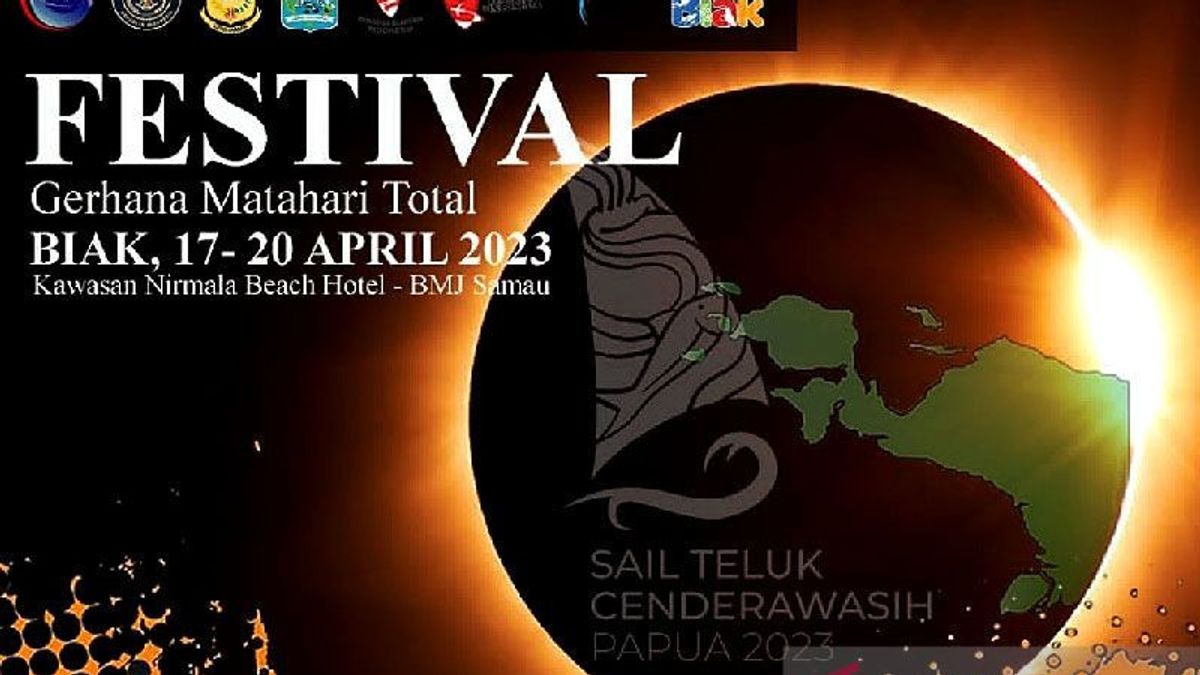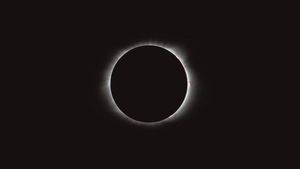JAKARTA - The National Research and Innovation Agency (BRIN) formed three teams to examine the phenomenon of a hybrid solar eclipse centered in Biak Numfor Regency, Papua Province.
Hybrid solar eclipses are unique, because some areas that are traversed by eclipses will experience a total solar eclipse and some other areas experience a ring solar eclipse.
"On April 20, we will conduct observations in Biak," said BRIN Space Research Center intermediate researcher Johan Muhammad in a statement quoted in Jakarta, Antara, Wednesday, April 19.
The first BRIN team conducted solar research, which was to predict the appearance of the corona by utilizing artificial intelligence technology and analyzing the shape of the corona to find out the phase of solar activity.
Furthermore, the second team conducted an ionosphere study which would examine the impact of the solar eclipse on the condition of the ionosphere in Indonesia.
Then, the third research team will conduct a geomagnet research in the form of examining the impact of the eclipse on geomagnet activity.
Johan hopes that research related to the hybrid solar eclipse can provide information about the impact of eclipses that can affect space technology-based terrestrial planets, such as navigation and telecommunications.
In addition, these studies can later become moments to validate the space models that have been made so far.
"Testing is very important to know how well the existing models are, so that the negative impact of space weather can be anticipated accurately," said Johan.
On April 20, 2023, a hybrid solar eclipse will pass through Indonesian territory. The eclipse was formed due to a change in distance between the earth's curved surface and the moon as an object that hinders the sun during a solar eclipse.
The total solar eclipse will be observed, especially in eastern Indonesia, which is relatively short in approximately 1 minute. Meanwhile, in other parts of Indonesia, it will be observed as a partial solar eclipse.
The hybrid solar eclipse will be observed as a ring solar eclipse in the southern region of the Indian Ocean and the Pacific Ocean.
Based on BRIN's forecast, the total solar eclipse in Biak Numfor that occurred was that a partial eclipse began at 12.20 WIT, starting with a total eclipse at 13.56 WIT, the peak of the total eclipse at 13.57 WIT, the end of the total eclipse at 13.57 WIT, and the end of the partial eclipse at 15.26 WIT.
Johan said that the partial solar eclipse observed from Lampung and observables in Jakarta, namely starting from a partial eclipse at 09.31 WIB, the peak of the partial eclipse at 10.44 WIB, and the end of the partial eclipse was at 12.02 WIB.
He reminded people who want to observe solar eclipses not to see directly without using a special solar filter, because it is dangerous for the eyes.
The tools that can be used to observe solar eclipses are telescopes equipped with solar filters, solar eclipse special glasses, telephoto lens DSLR cameras equipped with solar filters, and needle-hole cameras.
SEE ALSO:
The English, Chinese, Japanese, Arabic, and French versions are automatically generated by the AI. So there may still be inaccuracies in translating, please always see Indonesian as our main language. (system supported by DigitalSiber.id)


















